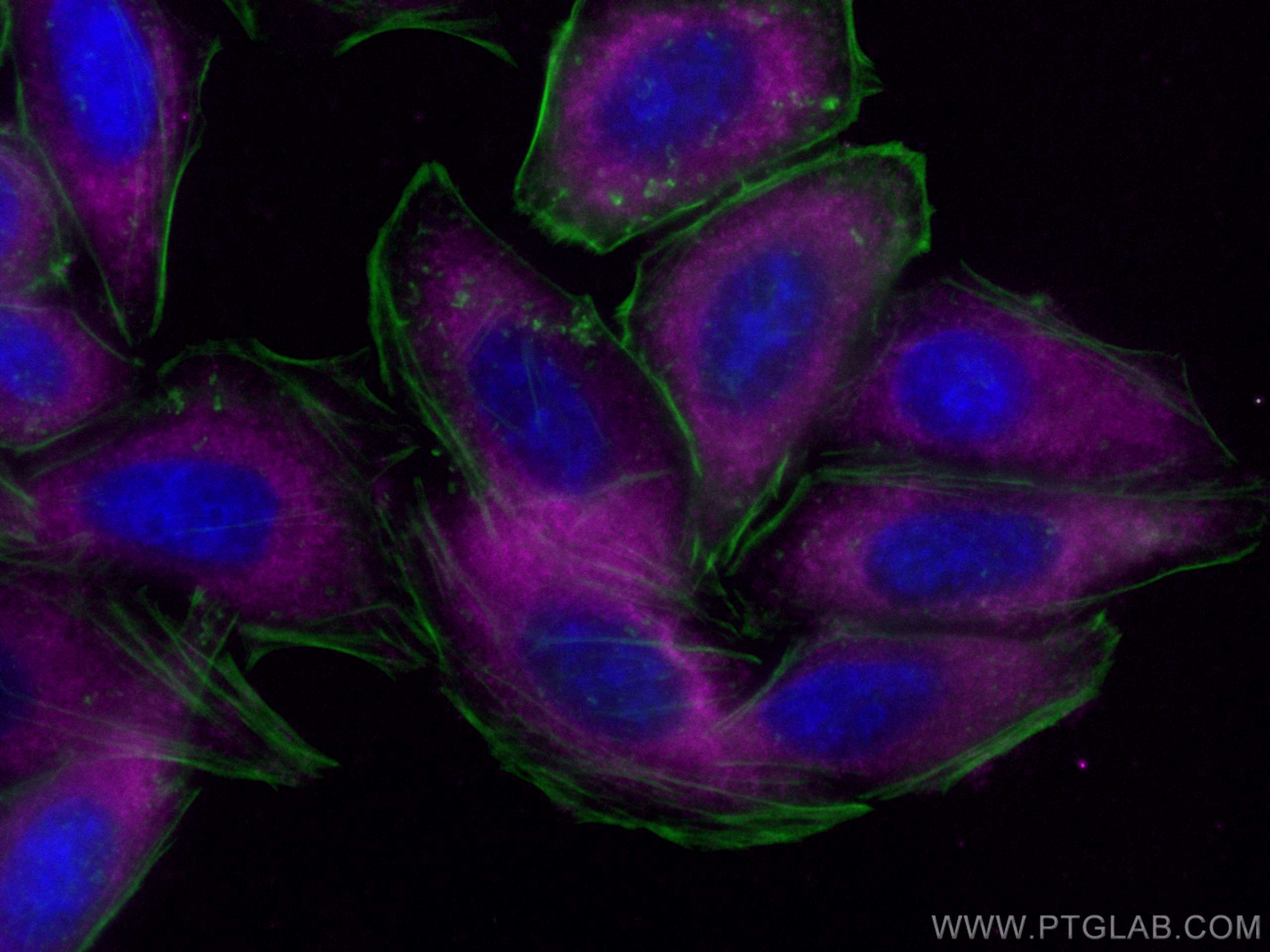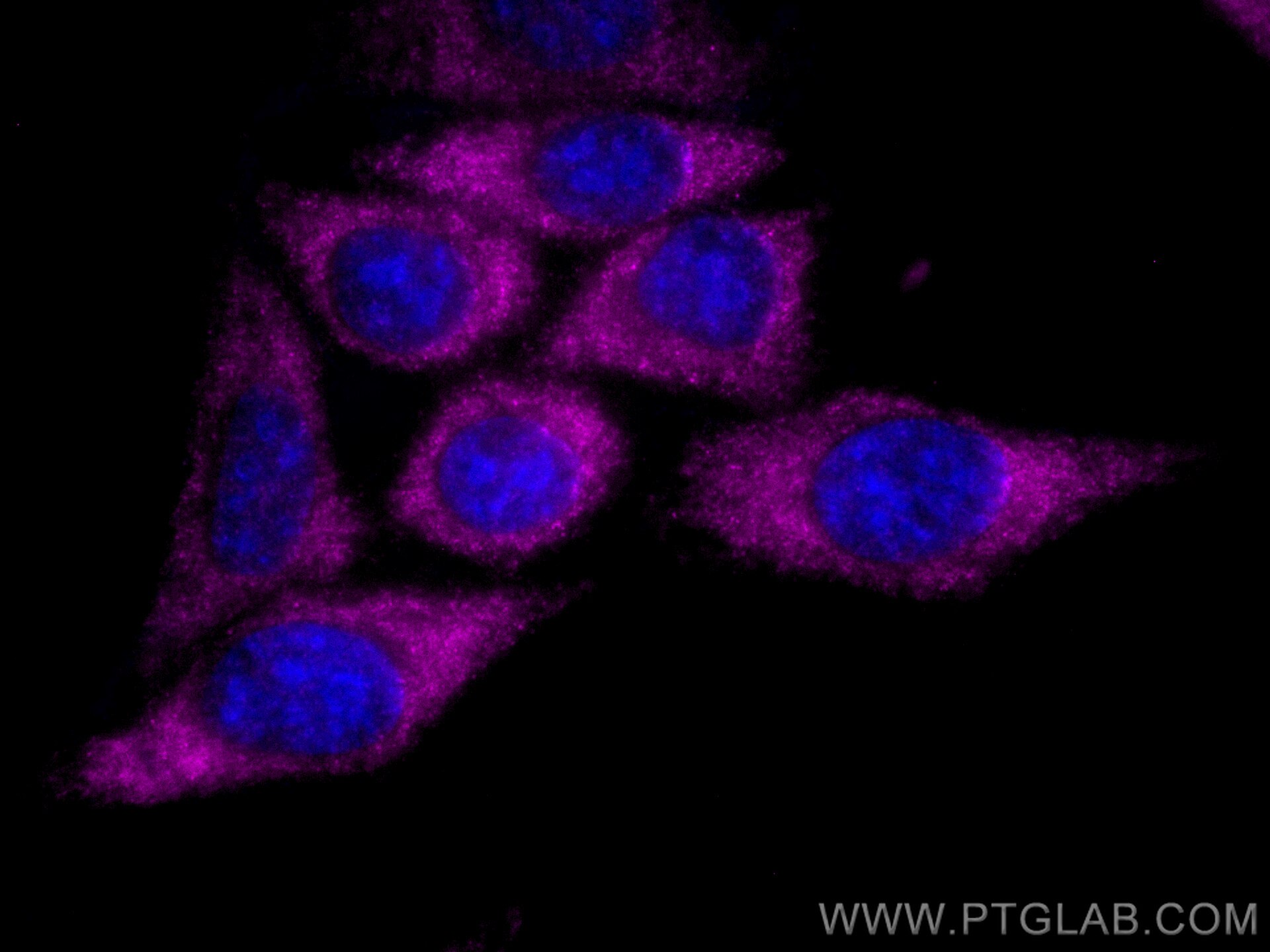Tested Applications
| Positive IF/ICC detected in | HepG2 cells |
Recommended dilution
| Application | Dilution |
|---|---|
| Immunofluorescence (IF)/ICC | IF/ICC : 1:50-1:500 |
| It is recommended that this reagent should be titrated in each testing system to obtain optimal results. | |
| Sample-dependent, Check data in validation data gallery. | |
Product Information
CL647-67810 targets LARP1 in IF/ICC applications and shows reactivity with human, mouse, rat samples.
| Tested Reactivity | human, mouse, rat |
| Host / Isotype | Mouse / IgG1 |
| Class | Monoclonal |
| Type | Antibody |
| Immunogen |
CatNo: Ag29993 Product name: Recombinant human LARP1 protein Source: e coli.-derived, PET28a Tag: 6*His Domain: 1-283 aa of BC033856 Sequence: MPRKRKTRHSSNPPLESHVGWVMDSREHRPRTASISSSPSEGTPTVGSYGCTPQSLPKFQHPSHELLKENGFTQHVYHKYRRRCLNERKRLGIGQSQEMNTLFRFWSFFLRDHFNKKMYEEFKQLALEDAKEGYRYGLECLFRYYSYGLEKKFRLDIFKDFQEETVKDYEAGQLYGLEKFWAFLKYSKAKNLDIDPKLQEYLGKFRRLEDFRVDPPMGEEGNHKRHSVVAGGGGGEGRKRCPSQSSSRPAAMISQPPTPPTGQPVREDAKWTSQHSNTQTLGK Predict reactive species |
| Full Name | La ribonucleoprotein domain family, member 1 |
| Calculated Molecular Weight | 1096 aa, 124 kDa |
| Observed Molecular Weight | 140-150 kDa |
| GenBank Accession Number | BC033856 |
| Gene Symbol | LARP1 |
| Gene ID (NCBI) | 23367 |
| RRID | AB_2920314 |
| Conjugate | CoraLite® Plus 647 Fluorescent Dye |
| Excitation/Emission Maxima Wavelengths | 654 nm / 674 nm |
| Form | Liquid |
| Purification Method | Protein G purification |
| UNIPROT ID | Q6PKG0 |
| Storage Buffer | PBS with 50% glycerol, 0.05% Proclin300, 0.5% BSA, pH 7.3. |
| Storage Conditions | Store at -20°C. Avoid exposure to light. Stable for one year after shipment. Aliquoting is unnecessary for -20oC storage. |
Background Information
LARP1, full named as La-related Protein 1, is an oncogenic RNA-binding protein required for ribosome biogenesis and cancer cell survival. (PMID: 32286153)It's has been proposed to function downstream of mTORC1 to regulate the translation of 5'TOP mRNAs such as those encoding ribosome proteins (RP). (PMID: 28650797) LARP1 has 2 isoforms with MW of 123-150KDa. With CL647, immunoflorecence detected location in cytoplasm.
Protocols
| Product Specific Protocols | |
|---|---|
| IF protocol for CL Plus 647 LARP1 antibody CL647-67810 | Download protocol |
| Standard Protocols | |
|---|---|
| Click here to view our Standard Protocols |






